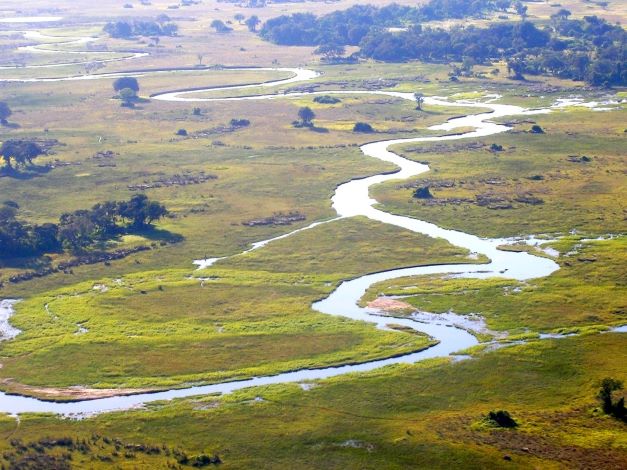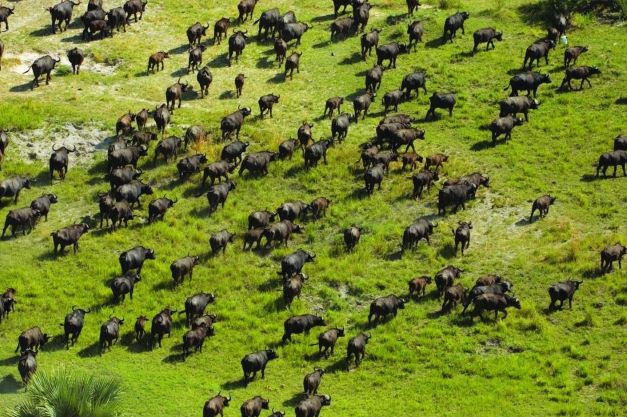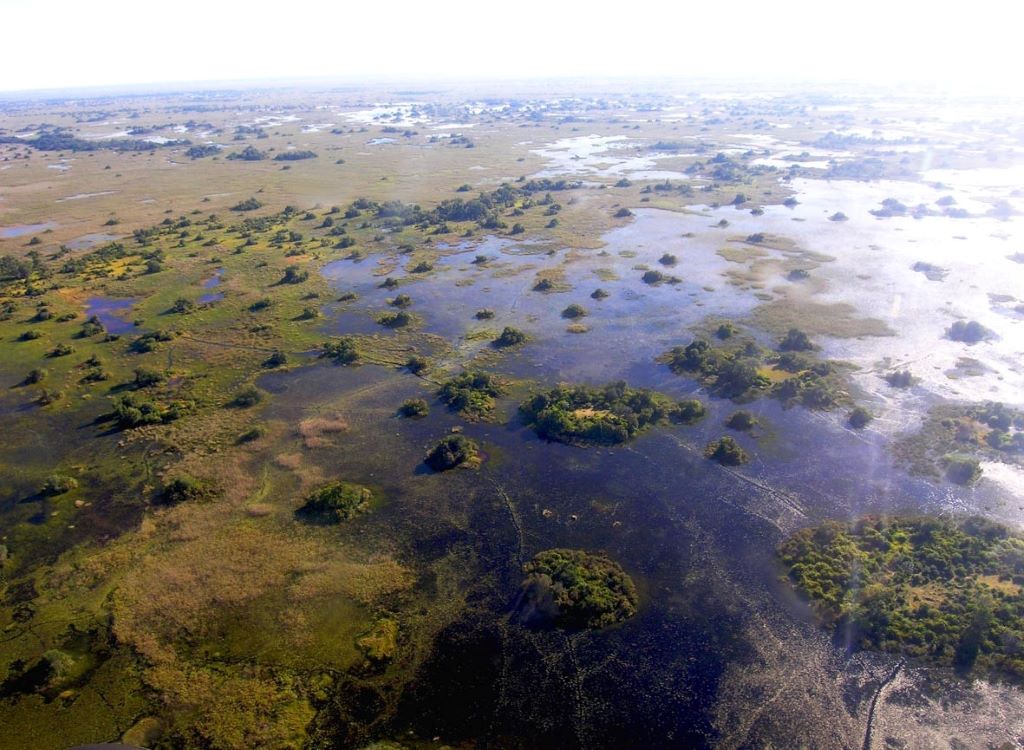Tagged “Africa‘s Last Eden,” the Okavango Delta is the largest intact inland delta in the world. Measuring 20,236km², it has been identified as one of Africa’s last remaining great wildlife habitat, offering refuge to some of the world’s most endangered animals and birds. With a large concentration of wildlife, Okavango Delta owes its existence to the Okavango River which flows from the Angolan highlands, across Namibia’s Caprivi Strip and into the harsh Kalahari Desert.
“All rivers run into the sea…” is the natural course. However, the Okavango or Kavango River is referred to as the river that never finds the sea. Strange movements in the earth’s crust dating back to about 40,000 years resulted in the blockade of the river, causing it to empty itself into a swamp in the Kalahari Desert which created a unique pulsing wetland, or – more correctly – an alluvial fan called the Okavango Delta.

Every year, the Okavango Delta receives approximately 11 cubic kilometres (1.1 × 10¹³ litres) of water from the Okavango River. From June to August as the annual flood peaks during Botswana dry winter period, the delta swells to thrice its permanent size. This creates one of the continent’s greatest concentration of wildlife as animals are attracted from several kilometers around.
Made up of permanent swamps, islands and seasonally flooded grassland, Okavango Delta apart from its teeming wildlife is also an Important Birdlife Area. Recently, a review of the area recorded a total of 122 species of mammals, 444 bird species, 71 fish species, 64 species of reptiles, and about 1,300 species of flowering plants.

Following a successful rhino reintroduction program, the Okavango at presents boasts of about 35 white rhinos and 4 black rhinos. Other animals that can be spotted include: elephant cheetah, giraffe, buffalo, lion, leopard, impala, wildebeest, kudu, duiker, hippo, serval, waterbuck, roan, and many more.
The delta was named as one of the Seven Natural Wonders of Africa, which were officially declared on 11 February 2013 in Arusha, Tanzania. In 2014, Okavango Delta was inscribed under the UNESCO criteria: vii (natural beauty), ix (evolutionary processes, and x (biodiversity) as a World Heritage Site, becoming the 1,000th site to be listed.



